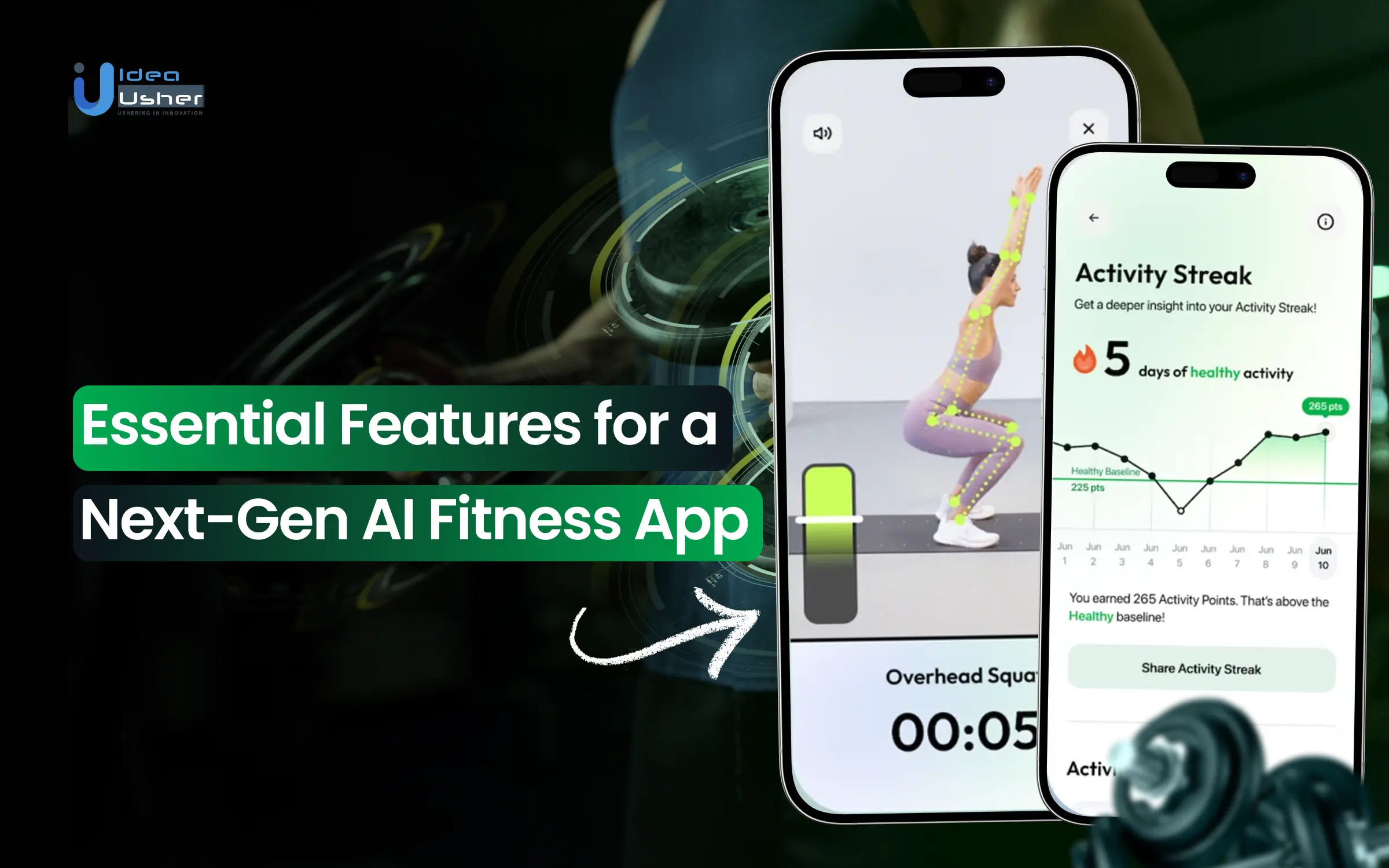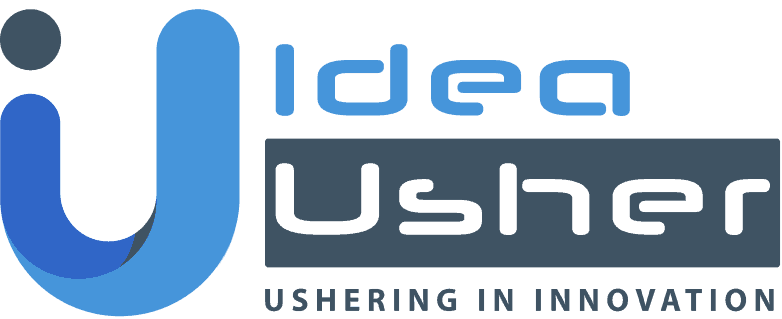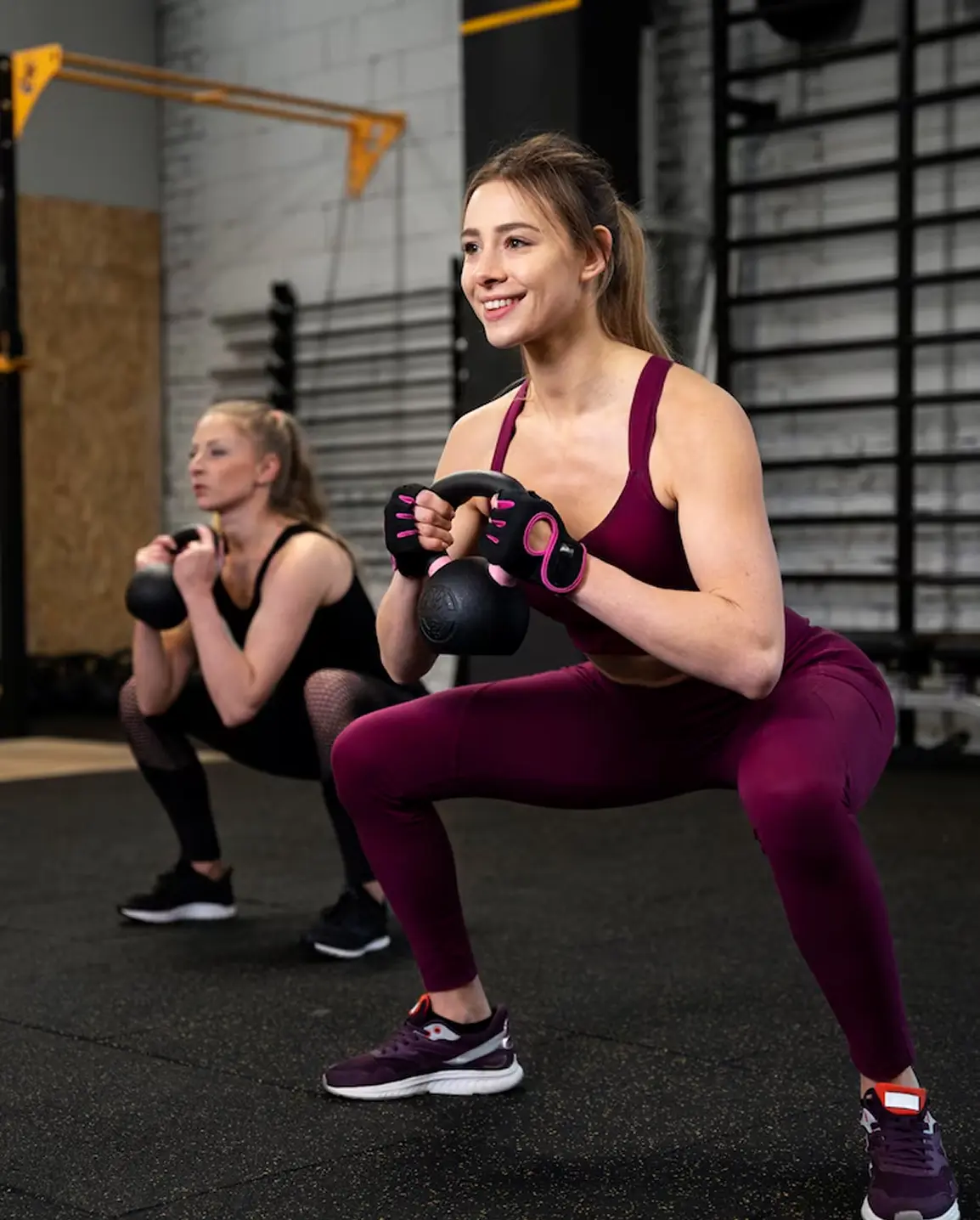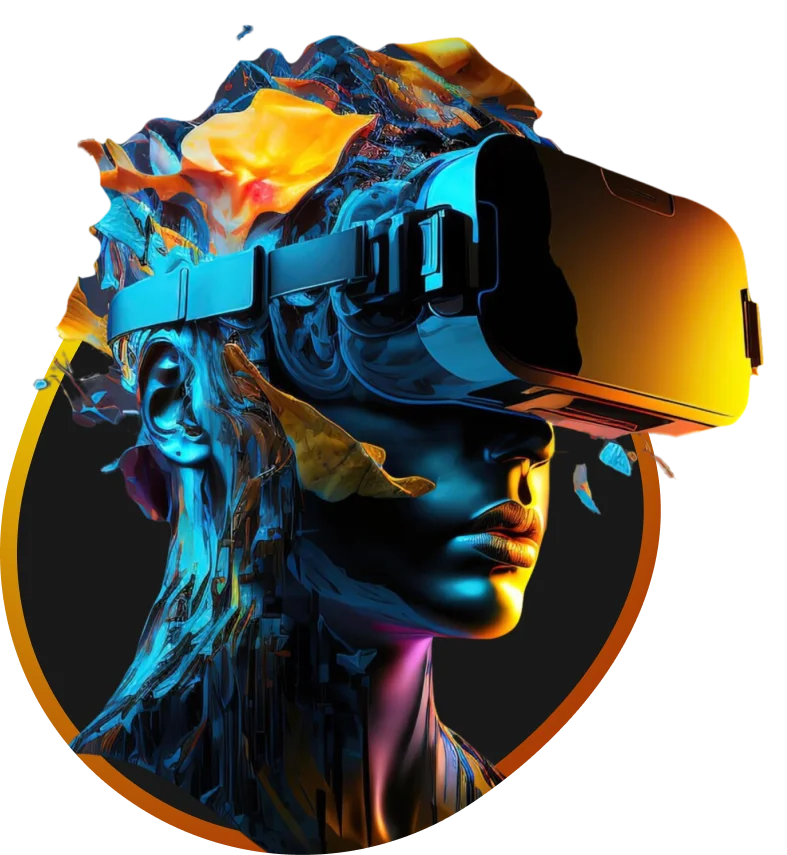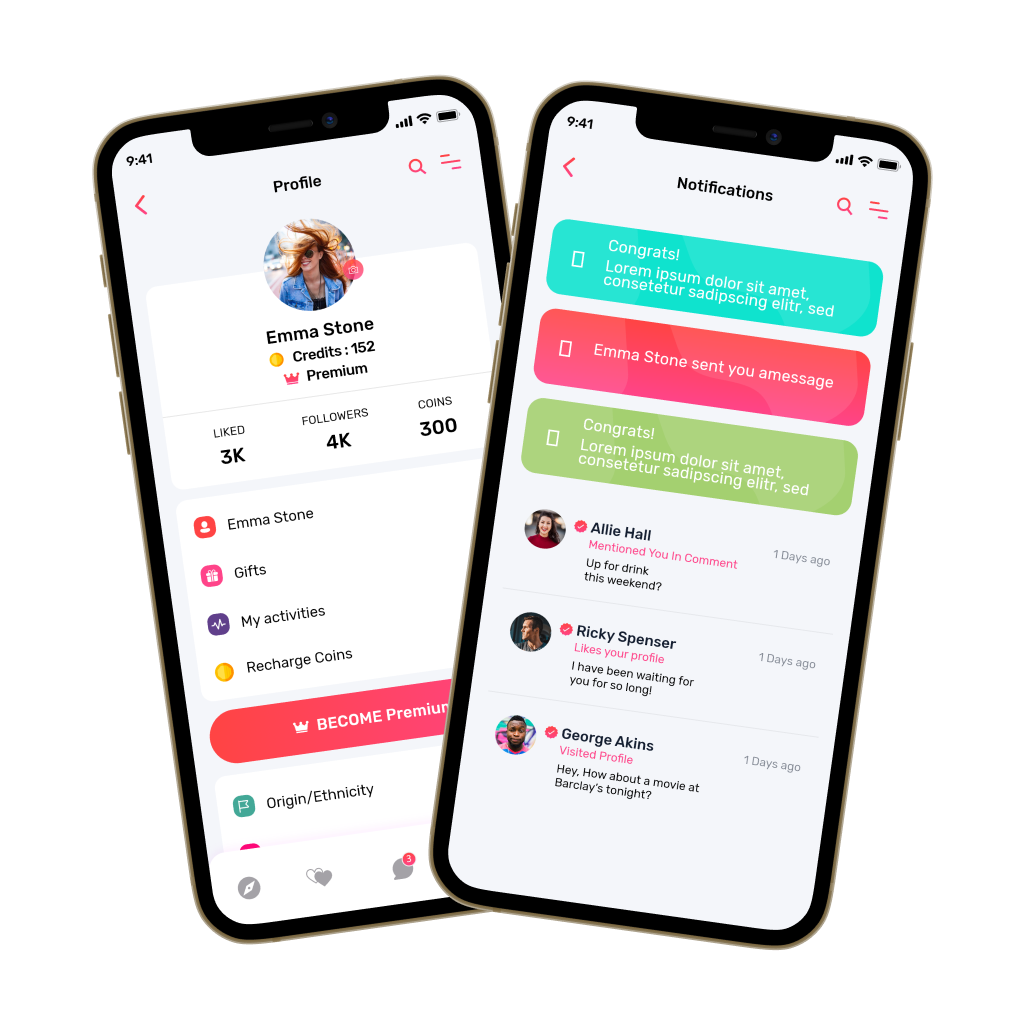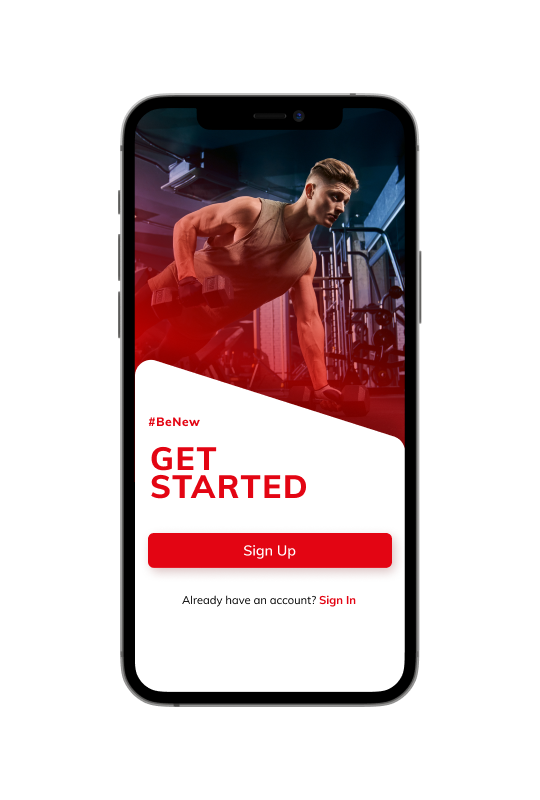The fitness industry is quickly embracing technology, and AI is changing the way users engage with health platforms. Fitness enthusiasts today crave convenience, personalization, and a deeper connection tailored to their individual goals. Understanding what makes a Next-Gen AI Fitness App truly effective can help meet these demands.
AI-powered fitness apps are addressing user needs with real-time solutions that adapt over time. They offer personalized workout plans, form correction, nutrition guidance, and mental wellness support, creating an interactive fitness experience. As user expectations rise, the effectiveness of these apps hinges on delivering personalized experiences driven by data insights.
In this blog, we will talk about the essential features that define a next-generation AI fitness app. These features are not only reshaping the user experience but are also setting new standards for how fitness is approached in a digitally connected world.
Market Size and Growth:
- Rapid Expansion: The global fitness app market (which heavily incorporates AI features) is experiencing significant growth. While exact figures for purely AI-driven apps are harder to isolate, the overall market provides strong context:
- Estimates often place the global fitness app market value in the billions of USD. For instance, figures around USD 6-7 billion in recent years (e.g., 2023/2024) are common.
- Projected growth is substantial, with Compound Annual Growth Rates (CAGR) frequently cited in the 15-25% range for the forecast period (e.g., up to 2030). This indicates a rapidly expanding market where AI is a key driver.
- AI as a Key Driver: AI is increasingly seen not just as a feature but as a core component driving user engagement and market value through personalization and effectiveness.
AI Features and Impact:
- Personalization is King: AI excels at creating hyper-personalized workout and nutrition plans based on user data (goals, fitness level, past performance, biometrics from wearables). This is a major draw compared to static, one-size-fits-all plans.
- Real-time Feedback: A growing number of apps use smartphone cameras and computer vision (AI) to analyze exercise form in real time, offering corrective feedback to improve effectiveness and reduce injury risk. Apps like Tempo, Fitbod, and Freeletics incorporate variations of this.
- Predictive Analytics: AI algorithms can analyze user progress, predict future results, identify potential plateaus, and suggest adjustments to routines for optimal outcomes.
- Enhanced User Engagement: AI-powered chatbots within apps provide instant support, answer questions, and offer motivation, mimicking aspects of a human coach and potentially increasing user retention.
- Data Integration & Insights: AI effectively synthesizes data from various sources (manual input, wearables like smartwatches, and connected equipment) to provide deeper insights into performance, recovery, and overall health trends.
User Adoption and Trends:
- Increased Health Consciousness: Post-pandemic, there’s a heightened global focus on health and wellness, driving the adoption of digital fitness solutions, including AI apps.
- Demand for Convenience: AI fitness apps offer personalized coaching and tracking anytime, anywhere, appealing to busy lifestyles.
- Wearable Synergy: The massive adoption of wearables (smartwatches, fitness trackers) fuels AI fitness apps, providing the rich data streams needed for effective personalization and analysis. Market stats show hundreds of millions of wearable devices sold annually worldwide.
Investment and Future Outlook:
- Significant Investment: Venture capital continues to flow into health tech and fitness tech, with a strong focus on companies leveraging AI for differentiation and improved outcomes.
- Future Integration: Expect deeper AI integration, potentially analyzing factors like mood, stress levels (via biometric data), and sleep quality to offer even more holistic and adaptive recommendations. AI might also become better at mimicking the empathetic and motivational aspects of human trainers.
Types of AI Fitness Apps
AI-powered fitness apps cater to diverse user needs, each designed to target specific aspects of health, wellness, and personal improvement.
1. Workout & Training Apps
Workout and training apps offer personalized fitness plans tailored to individual goals, fitness levels, and available equipment. These applications utilize AI-driven algorithms to deliver real-time feedback, adaptive exercise routines, and personalized performance insights, ensuring users achieve optimal results safely and effectively.
As fitness enthusiasts seek customized training, advanced workout apps stand out with features like real-time posture correction and dynamic difficulty adjustments. These enhancements improve the workout experience, appealing to users wanting expert guidance without traditional gym constraints.
2. Nutrition & Diet Apps
Nutrition and diet apps provide tailored meal plans, dietary recommendations, and precise macro-nutrient tracking aligned with user-specific fitness objectives and dietary preferences. Leveraging AI to analyze eating patterns, these apps automatically adjust meal plans and nutritional advice, simplifying healthy eating and optimizing dietary habits.
As consumer interest in holistic health grows, nutrition apps can stand out by providing smart grocery lists, adaptive meal suggestions based on performance, and fitness integration. These features enhance user experience and promote dietary adherence.
3. Mood Tracking Apps
Mood tracking apps employ AI to monitor and analyze emotional well-being, stress levels, and overall mental health patterns. By evaluating biometric data, mood journals, and behavioral cues, these apps suggest personalized coping strategies, mindfulness practices, and targeted exercises that support emotional health alongside physical fitness.
With rising mental health awareness, mood tracking apps offer valuable real-time analysis, predictive insights, and adaptive mindfulness. This personalized support sets them apart in a growing wellness market.
4. FemTech Apps
FemTech apps specifically address women’s unique health and wellness needs by using AI to provide personalized health insights on menstrual tracking, fertility management, pregnancy fitness routines, and postpartum recovery. Analyzing user data, AI generates tailored recommendations and fitness plans designed explicitly for women’s health concerns.
The FemTech industry is evolving, and apps can differentiate by offering adaptive wellness coaching, predictive fertility analytics, and thorough menstrual cycle tracking. These features meet users’ needs for effective women’s health solutions.
5. Activity Tracking Apps
Activity tracking apps use sensors and wearable devices to record daily movements, physical activities, and essential fitness metrics. AI-driven analysis helps users understand patterns in steps taken, calories burned, sleep quality, and activity intensity, facilitating informed lifestyle and fitness choices.
Wearable technology’s rise offers businesses launching activity tracking apps a competitive edge through integrated health insights, personalized recommendations, and cross-device synchronization, enriching user experience and daily health management.
6. Personal Trainer Apps
Personal trainer apps emulate professional fitness trainers by using AI to deliver personalized workout coaching, performance tracking, and adaptive fitness guidance. Utilizing conversational AI and real-time feedback, these apps motivate users, adjust routines dynamically, and closely monitor fitness progress.
With the rising demand for accessible fitness guidance, advanced personal trainer apps can stand out by providing voice-guided instruction, AI motivation, and personalized performance analytics. This interactivity and customization create a fitness experience comparable to in-person coaching.
7. Yoga & Meditation Apps
Yoga and meditation apps offer personalized mindfulness routines, breathing exercises, yoga sessions, and guided meditation experiences tailored to individual preferences and health conditions. Leveraging AI to analyze user engagement and feedback, these apps adapt sessions to support mental relaxation, physical flexibility, and overall wellness.
As consumer interest in holistic health rises, businesses can stand out by offering real-time corrections, personalized meditation, and adaptive yoga routines based on user feedback. These features enhance satisfaction and mindfulness outcomes.
8. Running Apps
Running apps are designed to track and analyze running activities, providing features such as distance, pace, and route tracking to help users monitor their running performance and achieve fitness goals.
As the running community expands, advanced running apps are gaining prominence by providing features beyond basic tracking functionalities. Businesses entering the running app market can distinguish themselves by offering GPS navigation, voice-guided instructions, and performance analytics during runs that enhance the overall user experience.
Work with Ex-MAANG developers to build next-gen apps schedule your consultation now
Must-Have Features for a Next-Gen AI Fitness App
These features can be considered for implementation in the app to stay ahead in this industry when developing a Next-Gen AI Fitness App.
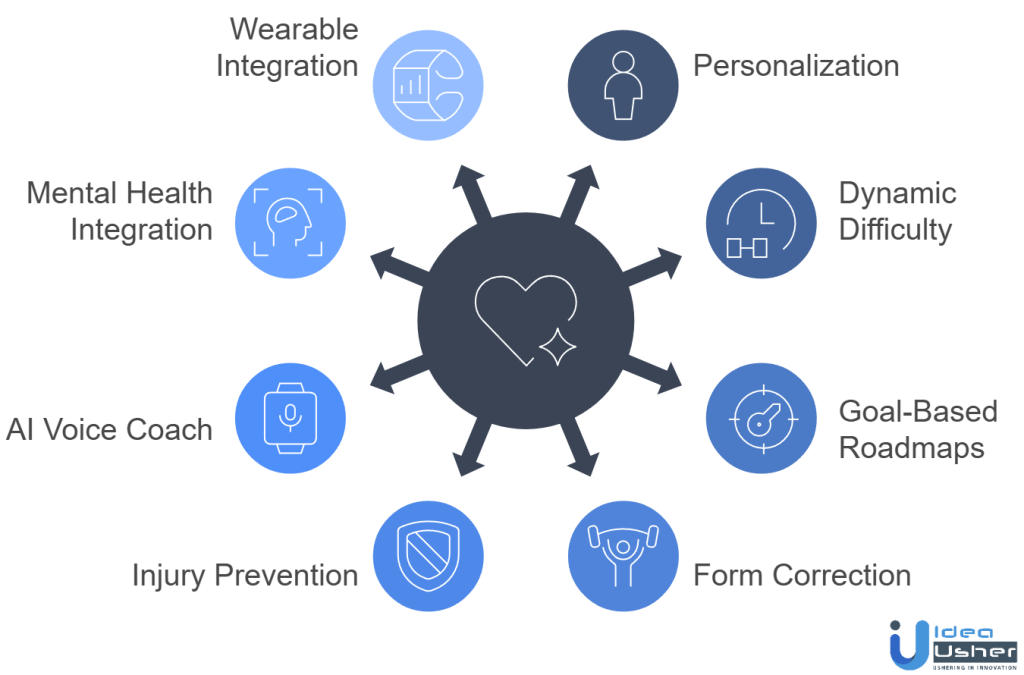
1. Personalization and Adaptive Learning
Artificial intelligence enables fitness apps to understand individual preferences, abilities, and routines. Over time, the system learns from user behavior and adjusts training approaches to match progress and lifestyle changes. This creates a more intuitive experience that feels uniquely tailored to the user, fostering long-term consistency and satisfaction.
Example: FitnessAI utilizes AI to generate personalized workout routines by analyzing over 5.9 million workouts, optimizing sets, reps, and weights for each exercise to suit individual user profiles.
2. AI-Generated Custom Workout Plans
AI can design workout plans tailored to a user’s goals, body type, fitness level, and available equipment. These plans are created automatically after analyzing user input and are regularly updated to reflect changing needs. It eliminates the need for manual planning, making fitness guidance more accessible and time-efficient.
Example: Planfit offers free AI-generated personalized workout plans, guiding users to reach their fitness goals 2.3 times faster by tailoring exercises to individual needs.
3. Dynamic Difficulty Adjustment
The app continuously monitors performance and adjusts workout intensity accordingly. If a user is progressing faster or feeling fatigued, the exercises adapt in real time to ensure a safe and effective experience. This adaptability keeps workouts challenging yet manageable, enhancing both safety and motivation.
Example: Zing AI provides adaptive workout plans that adjust in real time based on user performance, ensuring exercises remain appropriately challenging and aligned with fitness progression.
4. Goal-Based Fitness Roadmaps
Users can set specific fitness goals such as weight loss, muscle gain, or rehabilitation. The app then creates a structured roadmap that outlines daily tasks, milestones, and expected timelines. This roadmap serves as a clear visual guide, helping users stay focused and track their progress meaningfully.
Example: 8fit combines on-demand workouts with meal planning, creating personalized programs based on user-defined fitness goals and providing structured daily guidance.
5. Computer Vision for Form Correction
Using the device’s camera and AI, the app analyzes body movements during workouts. It provides real-time feedback on posture and form, helping users avoid injuries and improve efficiency. Offering instant corrections builds proper technique over time and maximizes workout impact.
Example: FormFusion employs AI to track exercise form, offering real-time feedback and corrections to enhance workout effectiveness and safety.
6. Injury Prevention Alerts
AI monitors workout patterns and detects signs of strain or potential injury. When unusual movements or overuse are detected, the app provides alerts and recommendations. This feature encourages safer habits by intervening early before any serious discomfort or injury occurs.
Example: Kemtai specializes in fitness analytics and motion tracking, using AI-driven computer vision technology to analyze a user’s form during exercises. Its algorithms detect improper posture and suggest corrections, reducing the risk of injury and enhancing workout effectiveness.
7. Fatigue and Overtraining Detection
By analyzing workout frequency, heart rate patterns, and sleep quality, the app can detect signs of physical fatigue or burnout. It suggests rest or lower-intensity sessions when needed. It promotes a balanced routine, ensuring users avoid long-term setbacks and remain consistent.
Example: FITENIUM is an AI-powered fitness app that tracks localized muscle fatigue and recovery in real time. By analyzing exercise data, it provides personalized alerts about potential overtraining and injury risks, helping users maintain a balanced and effective workout regimen.
8. AI Voice Coach (Conversational AI)
An intelligent voice assistant guides users through workouts with verbal instructions, tips, and encouragement. It responds in real time, offering support based on current performance. The hands-free experience keeps users engaged while also allowing smoother, uninterrupted workout sessions.
Example: Vocal Image is an AI-powered voice training and therapy app that helps users boost their confidence and enhance the attractiveness of their voice. It offers personalized exercises and real-time feedback to improve speaking and singing abilities.
9. AI-Powered Mental Health
The app considers emotional well-being alongside physical fitness. It tracks mood trends, stress levels, and behavioral cues to recommend mindfulness activities, breathing exercises, or calming routines. This integrated approach promotes mental resilience and emotional balance during the fitness journey.
Example: Wysa is an AI-powered mental health app that provides users with a personal AI coach to support mental well-being. It offers guided exercises, meditation, and mood tracking to help manage stress, anxiety, and sleep issues.
10. Motivational AI (Behavioral Nudges)
AI analyzes engagement patterns and sends personalized messages to keep motivation high. It might offer reminders, celebrate achievements, or encourage a return after missed sessions. These timely nudges can make the difference between falling off track and staying committed.
Example: Simple is an AI-powered weight loss app that offers personalized coaching, including motivational nudges to keep users engaged and on track with their fitness goals.
11. Wearable and IoT Device Integration
The app connects with smartwatches and fitness bands to collect real-time health data such as heart rate, steps, and sleep. This data allows for more accurate tracking and personalized feedback. It creates a seamless ecosystem where users can manage their health in one place.
Example: MyFitnessPal integrates with various wearable devices and apps, allowing users to sync data related to physical activity, heart rate, and sleep patterns for comprehensive health tracking.
12. Sleep and Recovery Analysis
Sleep quality has a direct impact on physical performance. The app monitors sleep duration and rest cycles, then adjusts workout plans based on recovery status. With better rest management, users experience improved performance, reduced fatigue, and faster recovery times.
Example: PUSH is an AI-powered workout app that tracks various metrics, including sleep patterns, to optimize workout creation and enhance muscle-building efforts.
13. Predictive Progress Analytics
AI reviews past performance to forecast future results. It predicts when progress might slow down or when it’s time to increase intensity. These insights help users stay ahead of plateaus and continuously refine their routines for optimal outcomes.
Example: PlanFitting leverages large language models and machine learning to analyze workout patterns and user progression. It provides predictive insights to optimize training phases, ensuring continuous improvement and helping users make informed adjustments before hitting performance plateaus.
14. AI Meal Planning and Macro Tracking
AI offers personalized meal suggestions based on fitness goals, dietary preferences, and activity levels. It tracks macronutrients like proteins, carbs, and fats to ensure balanced nutrition, simplifying dietary planning and supporting consistent eating habits that align with training.
Example: Cal AI is an AI-powered calorie tracker that simplifies calorie tracking by allowing users to snap a photo or scan a barcode to instantly calculate calories and nutrients, aiding in personalized meal planning and macro tracking.
15. Smart Grocery List Generator to Maintain Workout Diet
Based on selected meal plans, AI creates organized shopping lists with exact ingredients needed to follow the plan, helping users stay consistent with their diet and reduce food waste or impulse purchases. This streamlines the grocery process, making healthy eating more practical and achievable.
Example: FitGenie generates smart grocery lists to help users maintain their workout diet, ensuring they have the necessary ingredients aligned with their fitness goals.
16. Hydration and Supplement Reminders
AI calculates hydration and supplement needs depending on workout intensity, climate, and individual health data, sending reminders to drink water or take supplements at the right time. This keeps the body properly fueled, reducing the chances of neglecting essential daily routines.
Example: Waterllama is a water tracker app that helps users build healthy hydration habits by tracking daily water intake, providing smart reminders, and offering fun challenges to encourage consistent hydration.
17. Blockchain and Move-to-Earn Crypto Rewards
Users earn digital tokens for completing workouts or achieving milestones, which can be collected or used for in-app benefits, adding an exciting financial incentive to staying active and consistent.
Example: STEPN is a Move-to-Earn (M2E) app that rewards users with tokens for walking, jogging, or running outdoors, integrating blockchain technology to incentivize physical activity.
18. Virtual Fitness Communities
Apps include social features that allow users to connect, share progress, and join group challenges, creating accountability and making fitness more enjoyable through interaction with like-minded individuals.
Example: MyFitnessPal offers community features where users can engage with others, participate in challenges, and share their fitness journeys, fostering a supportive environment for achieving health goals.
19. AI-powered Gamification Elements
Fitness activities are transformed into engaging experiences through achievements, points, and leaderboards. AI tailors these challenges to individual performance levels, adding a sense of fun and purpose to everyday workouts to increase consistency.
Example: Nike Run Club incorporates gamification by offering achievements, leaderboards, and personalized challenges, enhancing user engagement and motivation in running activities.
20. AR and VR Workout Environments with AI-Generated Avatar Trainers
Augmented and virtual reality transform ordinary workouts into immersive sessions. Users can train in virtual environments guided by AI-generated avatar coaches, creating an engaging and motivating environment that enhances the home workout experience through visual and interactive stimulation.
Example: FitXR offers immersive VR workout experiences, providing users with virtual environments and trainers to guide them through various fitness routines, making home workouts more interactive and enjoyable.
Conclusion
The evolution of fitness technology is driven by the integration of artificial intelligence. AI enhances workout planning, real-time feedback, nutrition, emotional wellness, and user engagement, reshaping user expectations for fitness apps. By harnessing these features, developers can create personalized and effective solutions aligned with the future of digital wellness.
As user demand continues to shift toward intelligent, data-driven, and user-centric experiences, the apps that succeed will be those that prioritize innovation, personalization, and long-term engagement. Integrating these essential features is no longer optional. It is the foundation for creating impactful, future-ready fitness solutions that resonate with a rapidly evolving audience.
How will IdeaUsher help to build a Next-Gen AI Fitness App?
Our team of experienced ex-FAANG/MAANG engineers specializes in AI, machine learning, and mobile app development to create advanced AI fitness applications.
We integrate cutting-edge features such as AI-driven workout recommendations, real-time form correction, and seamless API integrations with wearables and fitness platforms like Apple Health and Google Fit. Our solutions are built for precision, scalability, and user-friendliness, enabling businesses to capitalize on the booming AI-driven fitness market.
Partner with IdeaUsher to develop an innovative AI-powered fitness app that revolutionizes workout tracking, enhances user engagement, and drives long-term fitness success.
Explore our portfolio for other development solutions we give to other enterprises!
Work with Ex-MAANG developers to build next-gen apps schedule your consultation now
FAQs
Q.1. What is the estimated cost of AI fitness app development?
The estimated cost of developing an AI fitness app typically ranges from $10,000 to $100,000 or more, depending on the complexity, features, and technology stack involved. Basic apps with standard AI functionality (e.g., personalized workout plans and tracking) may fall on the lower end, while advanced apps with features like real-time form correction, wearable integration, machine learning models, and AR/VR components will increase costs substantially.
Q.2. How does AI enhance user engagement in fitness applications?
AI enhances user engagement by offering personalized workout experiences that dynamically adapt to user progress, preferences, and feedback. Real-time analytics and intelligent algorithms keep users motivated through targeted recommendations, interactive feedback, and customized challenges. Furthermore, gamification elements such as rewards, leaderboards, and community interactions help sustain long-term engagement and foster a sense of accomplishment.
Q.3. What role does real-time feedback play in AI fitness applications?
Real-time feedback in AI fitness apps provides immediate insights into users’ exercise performance, form accuracy, and overall effectiveness of workouts. Instant corrective feedback helps users promptly adjust their techniques, reducing injury risk and enhancing exercise efficiency. Moreover, continuous real-time guidance maintains user motivation, ensuring workouts remain engaging and aligned with fitness objectives.
Q.4. How do AI fitness apps ensure data privacy and security?
AI fitness apps ensure data privacy and security by adhering to strict regulatory standards such as GDPR and HIPAA, implementing secure data encryption, and employing robust authentication methods. Continuous monitoring and regular audits help detect vulnerabilities early, safeguarding sensitive health information. Transparent privacy policies and user-controlled data permissions further enhance trust and compliance.
